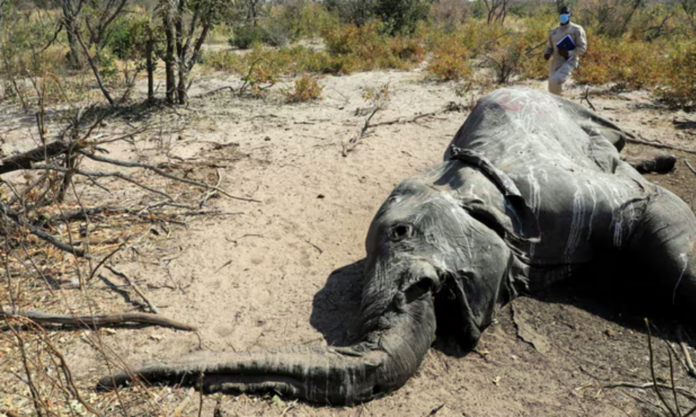Scientists discover why dozens of endangered elephants dropped dead
In 2020, 350 elephants mysteriously died in Botswana, with a further 35 dying in similar circumstances in Zimbabwe. Now scientists think they may have found the reason why
In May and June 2020, the death of 350 elephants in Botswana’s Okavango delta baffled conservationists and sparked global speculation about what had caused it. Elephants of all ages and both sexes were affected, with many walking in circles before dying suddenly, collapsing on their faces. Two months later, 35 more elephants died in north-western Zimbabwe.
At the time, the deaths in Botswana were attributed to an unspecified cyanobacterial toxin, government officials said, and no further details were published.
But tests on the elephants that died in Zimbabwe have finally come back and shown the cause was a little-known bacterium called Pasteurella Bisgaard taxon 45, which resulted in septicaemia, or blood poisoning.
The bacterial infection has not previously been linked to elephant deaths, according to the paper published in the Nature Communications journal. Researchers believe it could have been the same one responsible for the deaths in neighbouring countries.
“This represents an important conservation concern for elephants in the largest remaining meta-population of this endangered species,” researchers wrote in the paper. It was written by an international team of researchers from the Victoria Falls Wildlife Trust, the University of Surrey, laboratories in South Africa and the UK government’s Animal and Plant Health Agency (APHA).
African savanna elephants are declining by 8% a year, primarily due to poaching, with 350,000 remaining in the wild. The paper suggests that infectious diseases should be added to the list of pressures they are facing.
Dr Arnoud van Vliet from the University of Surrey said the infection “adds to the growing list of disease-related threats to elephant conservation”. Elephants are highly sociable animals, and also were likely stressed due to the drought conditions at the time, which made such an outbreak more likely.
Pasteurella bacteria has previously been linked to the sudden death of about 200,000 saiga antelopes in Kazakhstan – an incident that researchers believe could shed light on what happened to the elephant herds. Scientists believe the Pasteurella bacteria generally lives harmlessly in the tonsils of some, if not all, of the antelopes. An unusual temperature increase to 37C, however, caused the bacteria to pass into the bloodstream, where it caused septicaemia.
Bisgaard taxon 45 has previously been found to exist in tigers and lions (found by testing a bite wound in a human) as well as chipmunks and psittacines, according to the paper.
Other things experts tested for included cyanide, which some people use to poison elephants, but there were no traces of any poisons in the carcasses or near the waterholes. Other theories included ingestion of toxins from algal blooms. Poaching was immediately ruled out because the carcasses still had tusks attached.
The lead investigator, Dr Chris Foggin, a wildlife veterinarian at the Victoria Falls Wildlife Trust, said investigating the mass deaths had been “challenging”.
“Identifying and then reaching the carcasses in time to obtain useful samples is one problem we often face. However, we also didn’t know what disease we may be dealing with,” he said.
“We initially suspected that it could be anthrax, which is known to occur in the area; or possibly some other disease that might pose a risk to human health. We therefore had to be cautious when undertaking the postmortem examinations on elephants which, in itself, is a difficult task with such a big animal, especially working in field conditions.”
Scientists were unable to visit the site in neighbouring Botswana and most official samples were collected from animals that had already started rotting. The paper says the findings of blood poisoning “may represent an ongoing phenomenon in this region”, with previous cases missed due to lack of testing.

